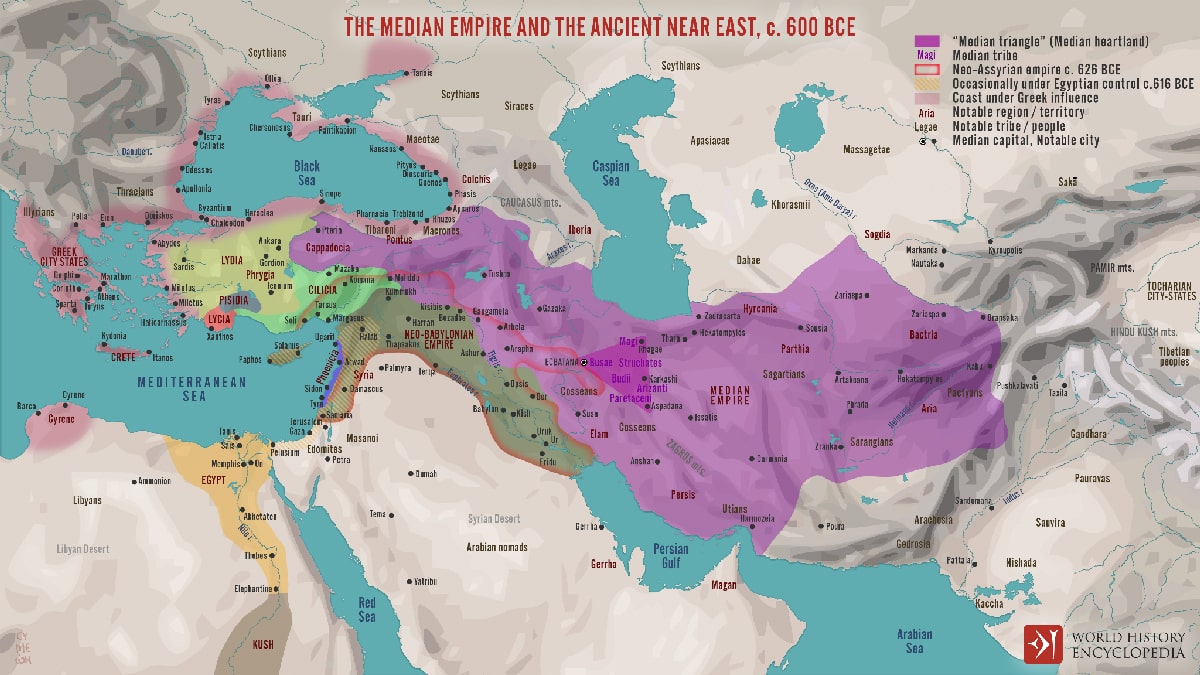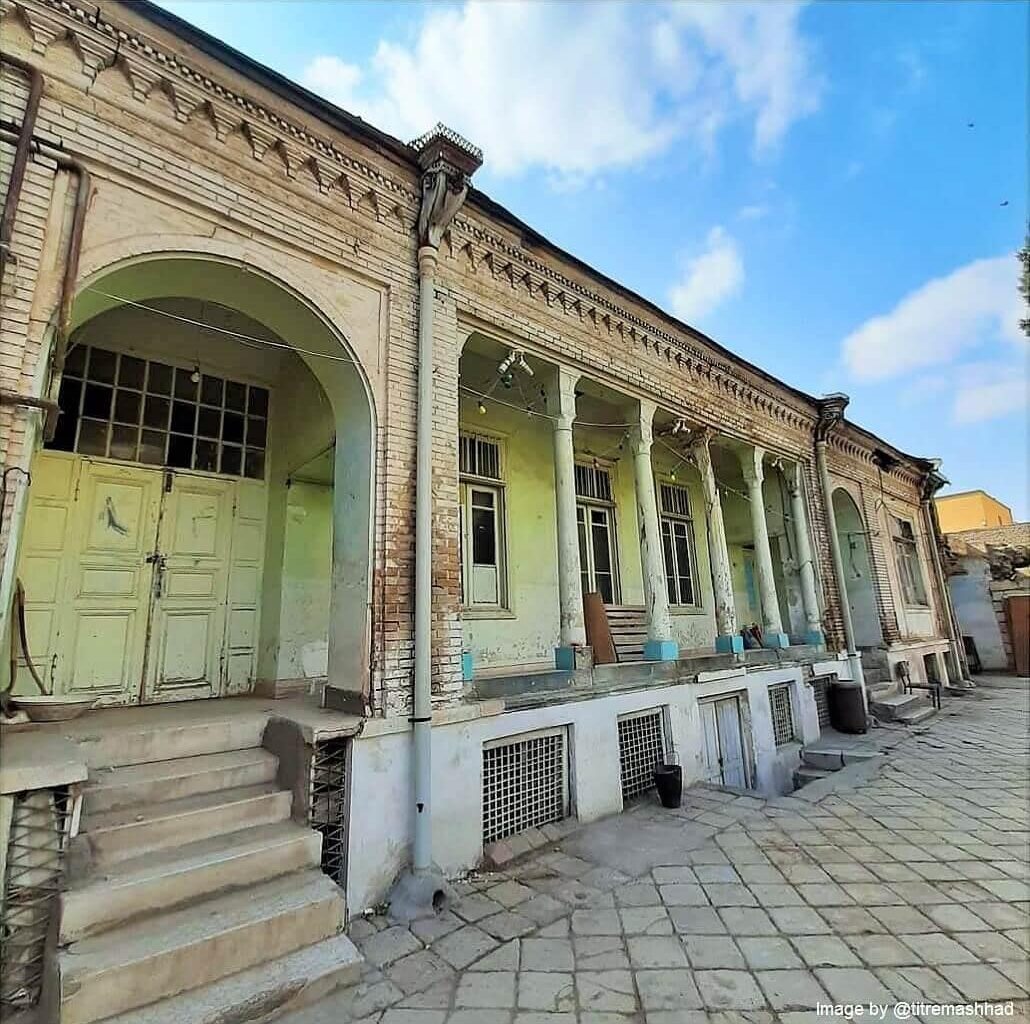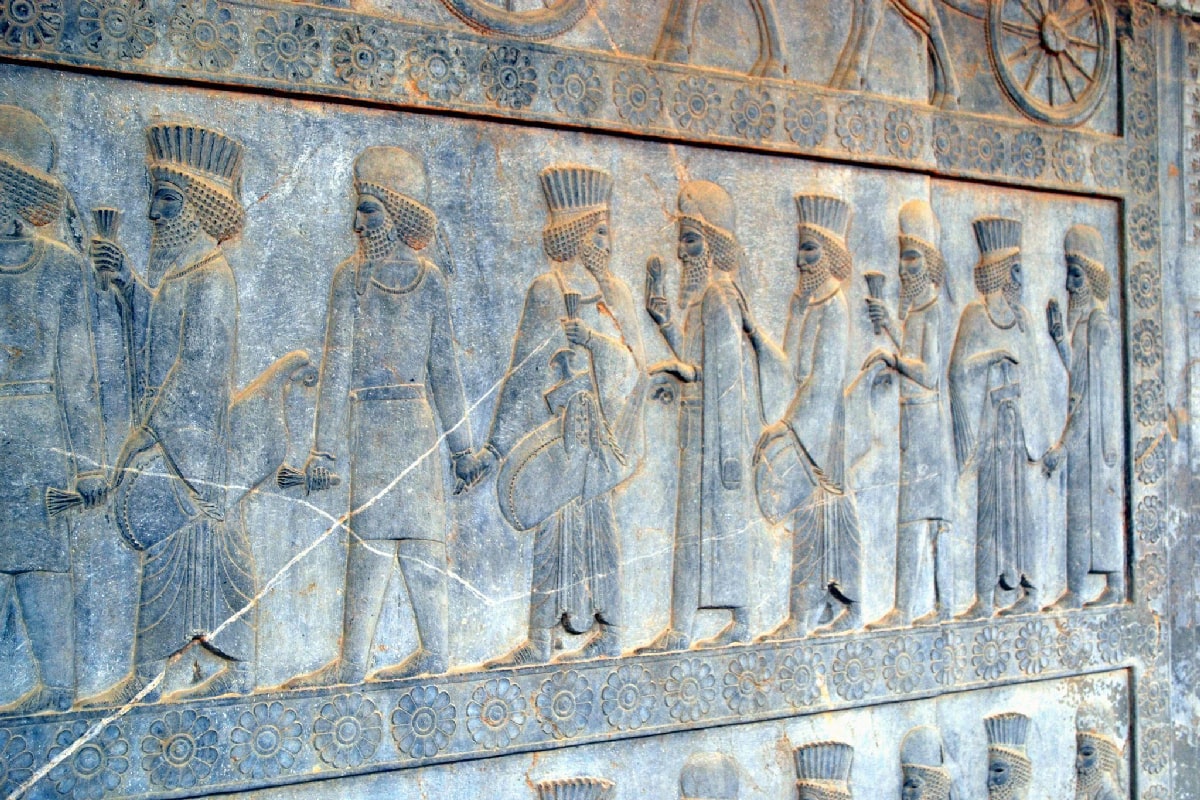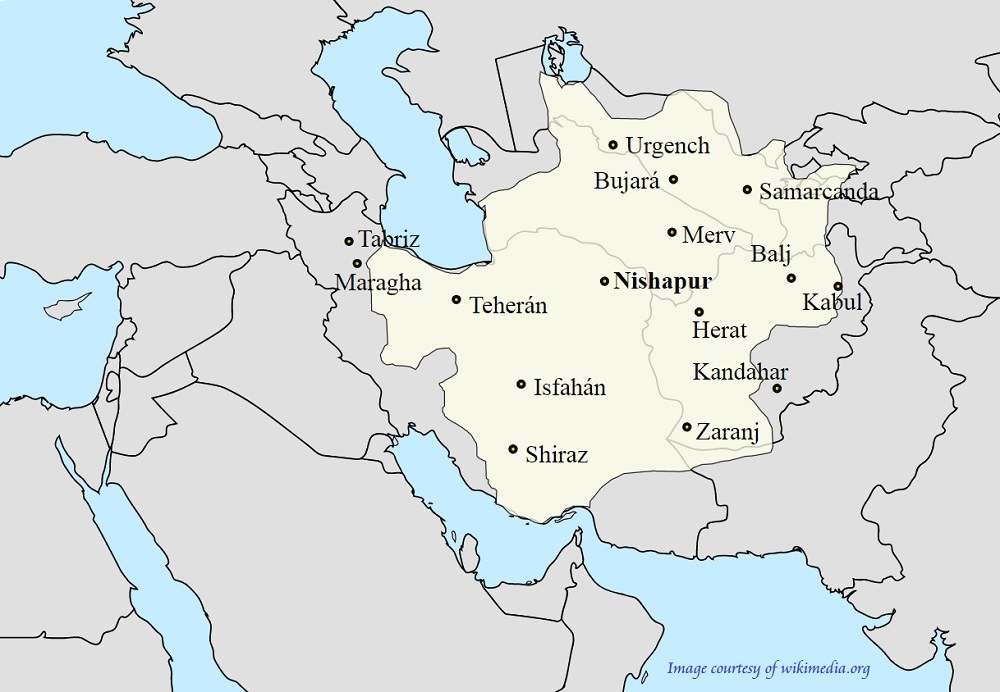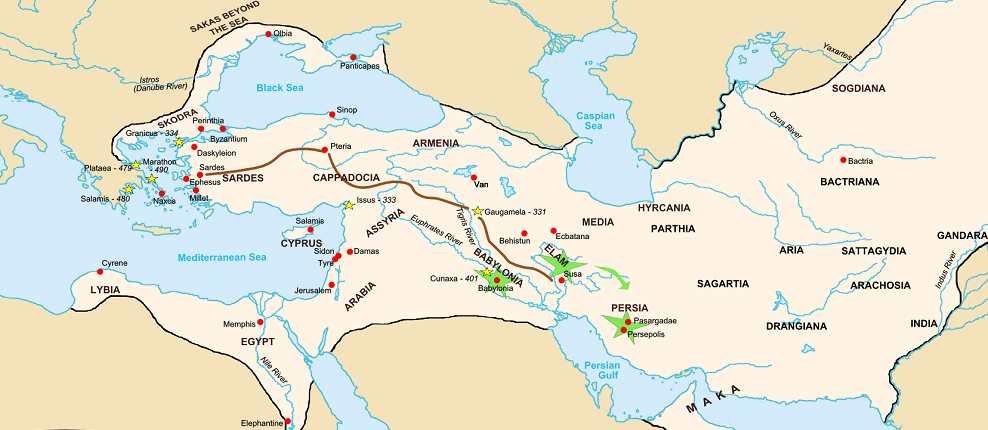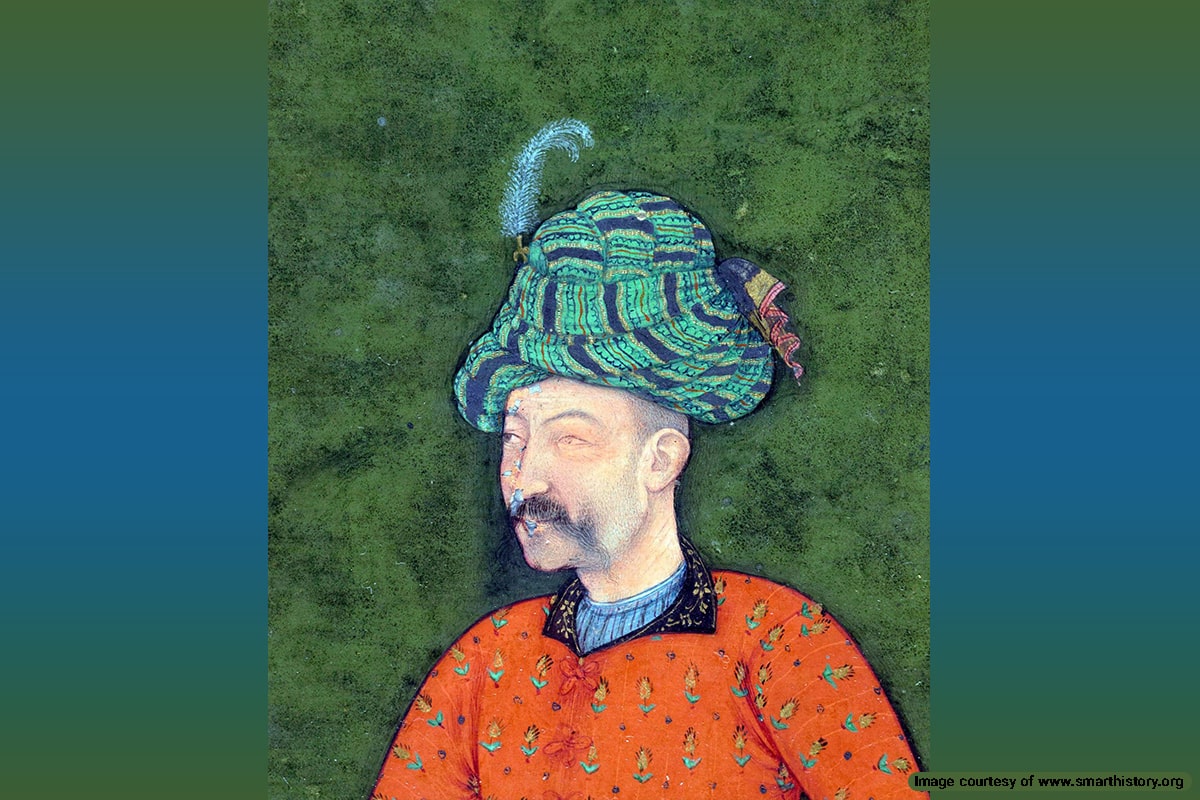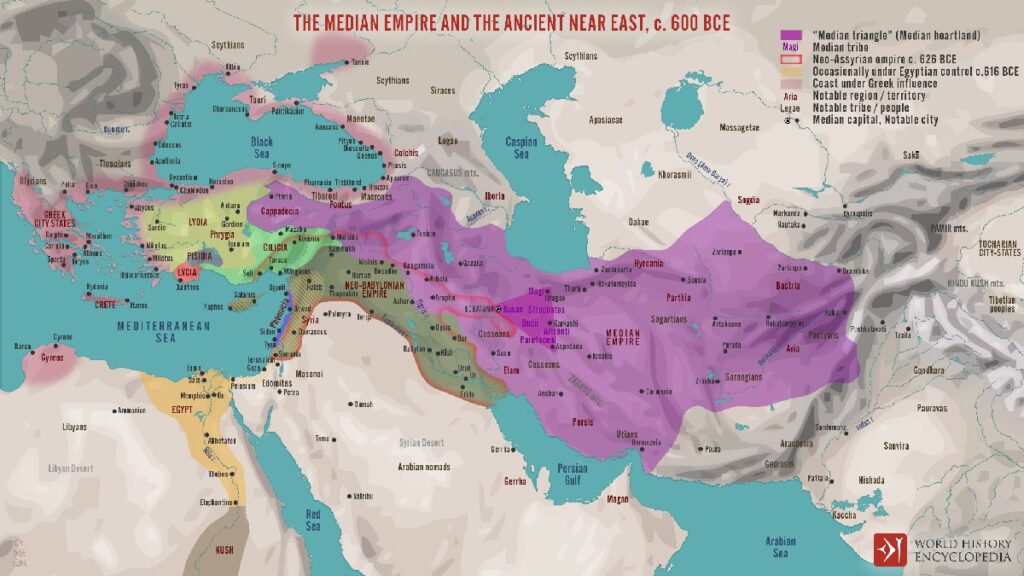
The Medes or Mâda were an ancient Iranian ethnic group who established one of the first empires in the West Asia region. Medes borders were never fixed, and they constantly struggled over territory with the neighboring kingdoms. There are arguments regarding how far they went in 4 directions. We can estimate the extent of Median territories through archeological findings and Assyrian and Greek texts, the two main historical accounts of the History of Medes.
In this post, we will look at available evidence regarding their presence in the north, south, east, and west of the Iranian plateau. The Medes did not leave any written evidence of their endeavors, such as clay tablets or inscriptions. In addition, the remains of Medes culture were adopted by the Achaemenids, making it difficult to provide a precise account of how far the Medes territory expanded. Their presence in certain locations remains a mystery to archeologists since their successors adopted similar religious concepts.
Ecbatana, the Heart of the Median Empire
Ecbatana (Hagmatana) is located in a strategic location in the Zagros Mountains, currently known as Hamadan. Deioces selected it as the Medes Capital and retained its popularity for most of Iranian history. Deioces, the first king of the Medes, chose Ecbatana as the center of his kingdom. The Medes were opposed by Urartu and Scythians to the north, Assyrians and later Lydians to the west, and Babylonians to the South.
After periods of Neo-Assyrian and Scythian rule, the Medes rose to the height of their power under Cyaxares. A marital alliance with Babylon’s ruler, Nabopolassar, and the assistance of a tribe of Scythians helped the Medes finally conquer the Urartu in modern-day Armenia. It was followed by a war with Lydia, which ended in peace by marriage, cementing the Median-Lydian border in eastern Anatolia.
Medes Tribes and Location
- Buase: They lived near Ecbatana, they were most likely Indigenous as Buza means non-Iranian
- Magi: A priestly and scholarly tribe, residing in Rhagae or Rey, near modern Tehran
- Paretaceni: Stationed near Aspadana, modern Isfahan
- Arizanti: Lived near modern Kashan
- Struchates and Budii: lived in villages in the Medes heartland, a triangle between Ecbatana, Rhagae, and Aspadana
Medes Borders to the North, Caucasus Mountains
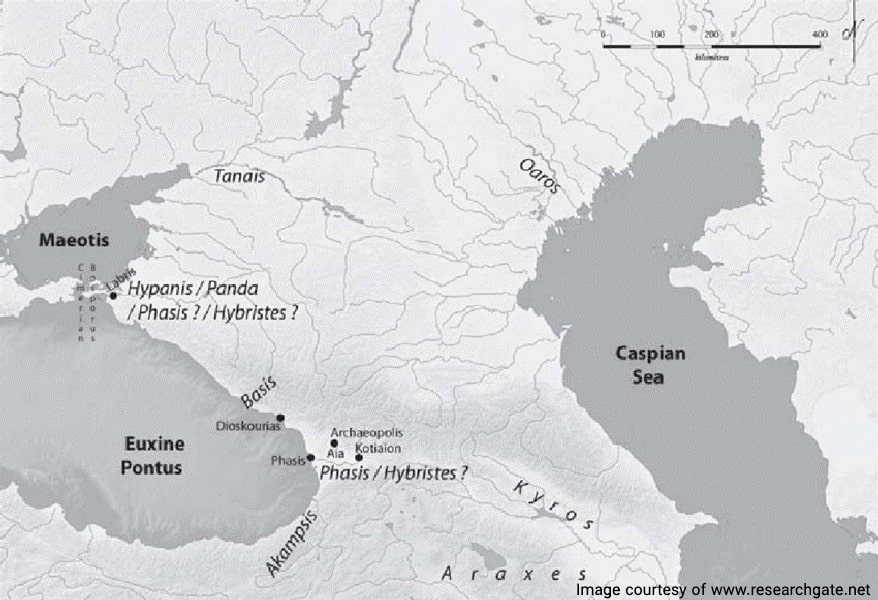
To the North, the Medes pushed their borders northward into the Caucasus Mountains, now a part of modern-day Georgia and Armenia. The Medes established control over these territories to secure the route to Greek territories. According to Herodotus, the realm of the Medes extended as far as the Phasis River in the north. (Book 1, chapter 104, section 1) This expansion also helped the Median Empire establish trade routes to the Caucasus settlements, further strengthening Medes economy and military prowess.
The Ururtians and the Scythians were the two main adversaries in the north and one of the reasons for the unity of Median tribes and the formation of their central government in the 8th Century BCE.
Medes Borders to the South, Modern-day Iraq
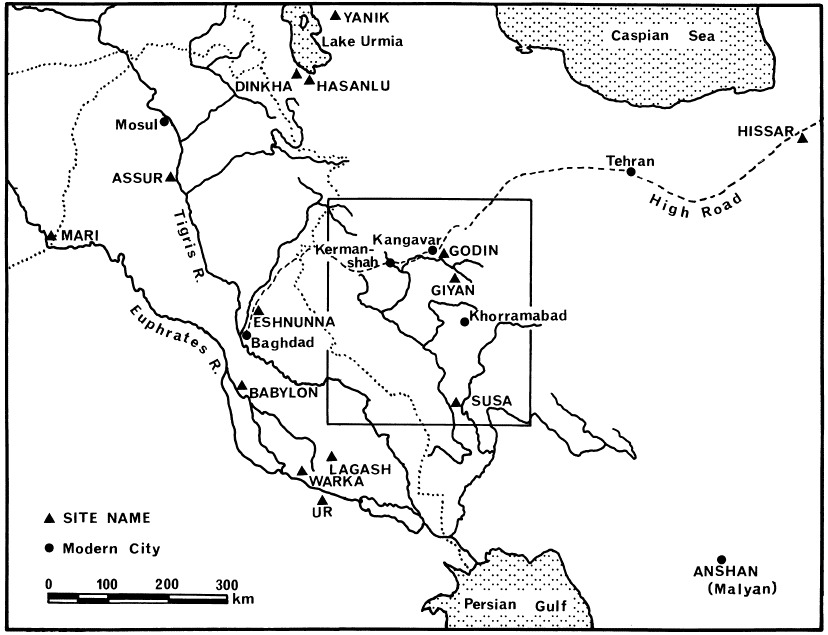
The Median Empire expanded its territories southward into the heart of Mesopotamia, now part of modern-day Iraq. They had established control over major cities such as Babylon, Nineveh, and Ur. Remains of Medes civilizations have been discovered in Godin Tepe. They were considered centers of commerce, culture, and political power in the ancient Near East. By conquering these regions, the Medes gained access to the wealth and resources of Mesopotamia.
They were the main military force in the conquest of Assur, and after defeating the Neo-Assyrians, further solidified their position as a major power. Afterward, they reached an agreement with Babylonia that lasted until the fall of Astyages. While Median-Babylonian relations deteriorated after the death of Cyaxares, a war did not break out between the two kingdoms.
Medes Expansion to the East
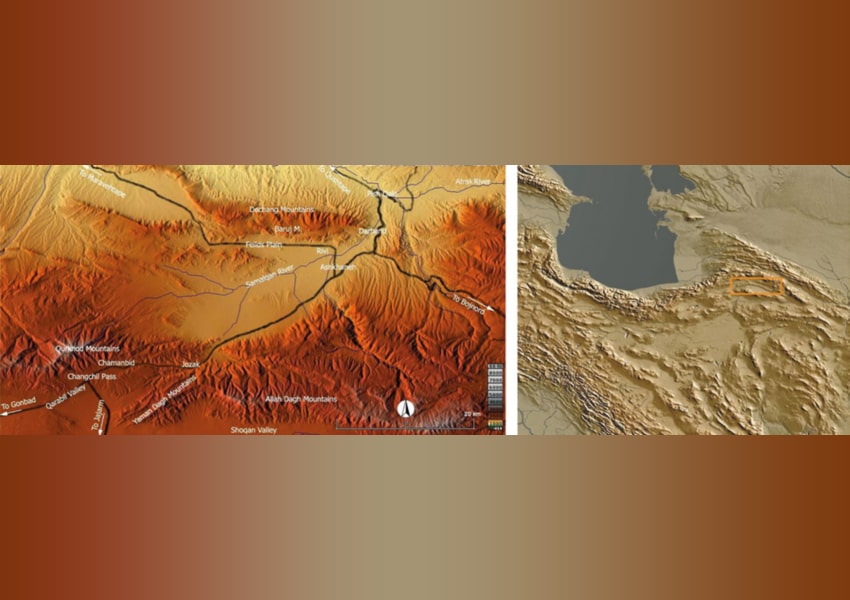
The Medes expanded their empire eastward into the Iranian plateau, a region that is now part of modern-day Iran. The Medes established control over key territories such as Ecbatana (modern-day Hamadan) and Rhagae (modern-day Rey), important centers of trade and administration in the ancient world. This expansion allowed the Medes to develop a strong presence in the region and exert influence over neighboring kingdoms and tribes.
Archeological studies suggest their borders expanded to the northeast of modern-day North Khorasan province. Excavations in Tappe-Rivi uncovered remains of Medes strongholds, likely as a base of operations for their expansion into Afghanistan. The Medes controlled most of modern-day Afghanistan in 700 BCE and lasted until the rise of the Achaemenid Empire.
Medes Borders in the West, Northern Turkey
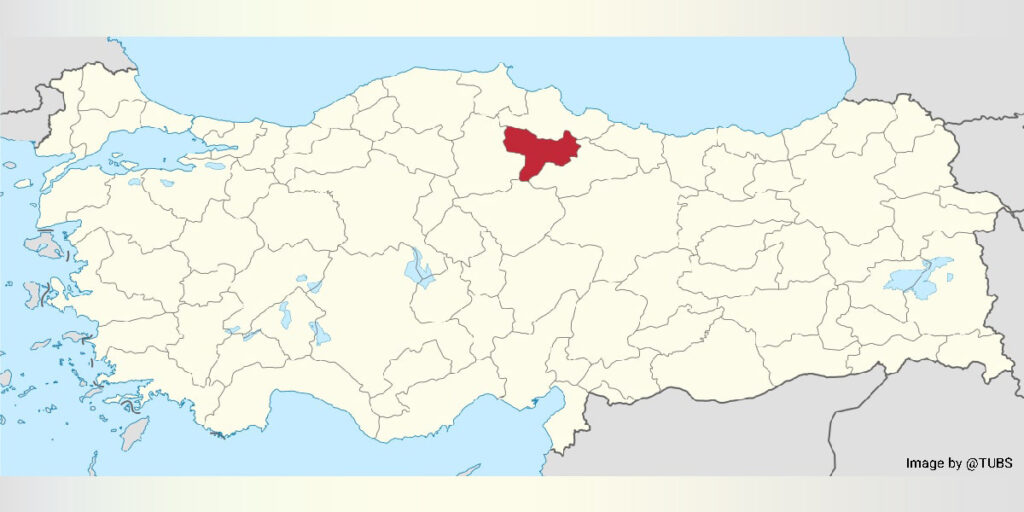
The Medes expanded their empire westward into Anatolia, a region that is now part of modern-day Turkey. The remains of Medes settlements in Oluz Hoyuk, Amasya province prove that the Median Empire stretched far into west Asia. The Medes established control over strategic territories from the kingdoms of Lydia, Phrygia, and Cappadocia. These areas provided much-needed natural resources and expanded the cultural diversity of the kingdom. This expansion allowed the Medes to establish trade routes with the peoples of Anatolia, further enhancing their economic and military power.
Medes Borders in Ancient West Asia
The Medes Empire expanded its empire in all four directions, establishing a vast and powerful realm that dominated ancient West Asia and paved the ground for the rise of the Achaemenid Empire. The Medes established their power mostly by military conquests and strategic alliances with Babylon and Lydia. Although the Median Empire eventually fell to the Achaemenid Empire in 549 BCE, the legacy of the Medes cannot be ignored as the cornerstone of Iranian civilization.
It is important to note that Median history remains subject to doubt, as historical accounts left by Assyrians could be tainted with prejudice. Furthermore, Herodotus’s account nearly 200 years later is not entirely reliable, as proven in other instances. So, future archeological findings may change what we know about the extent of Median borders.






